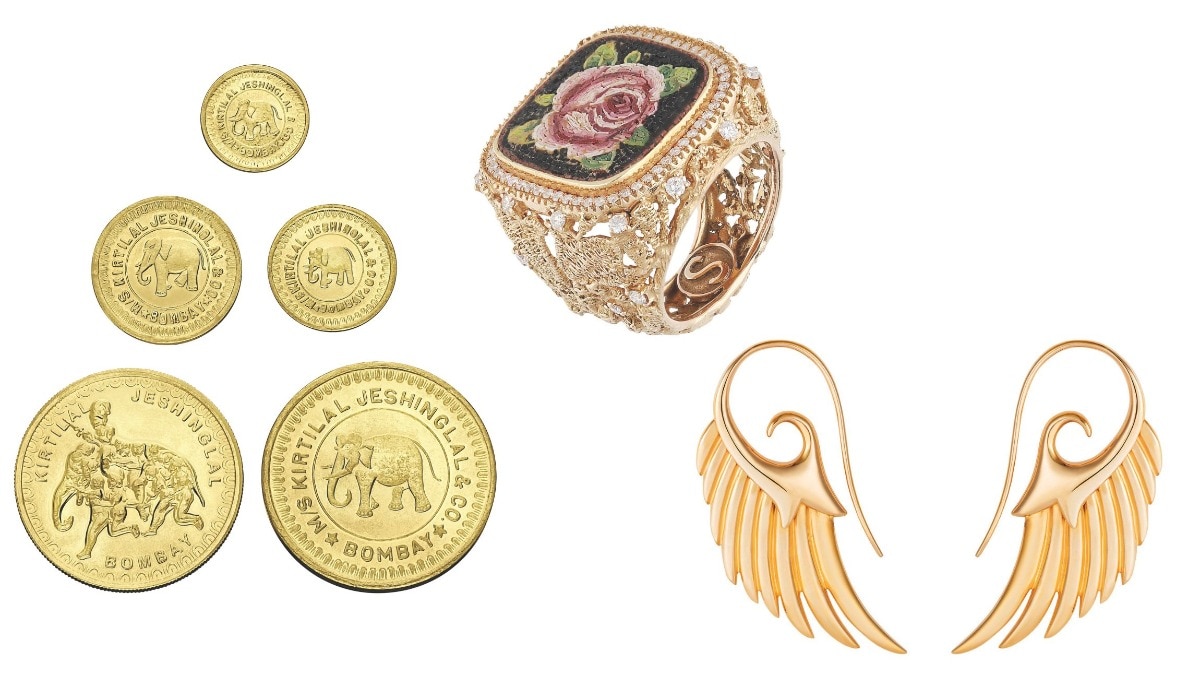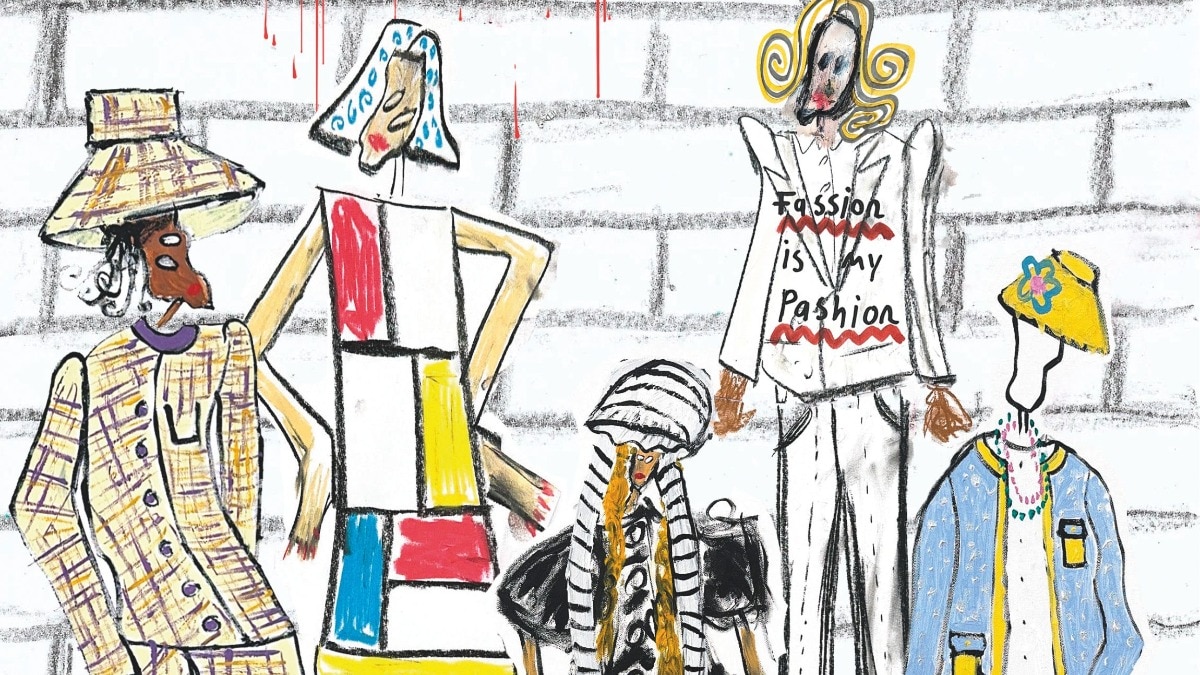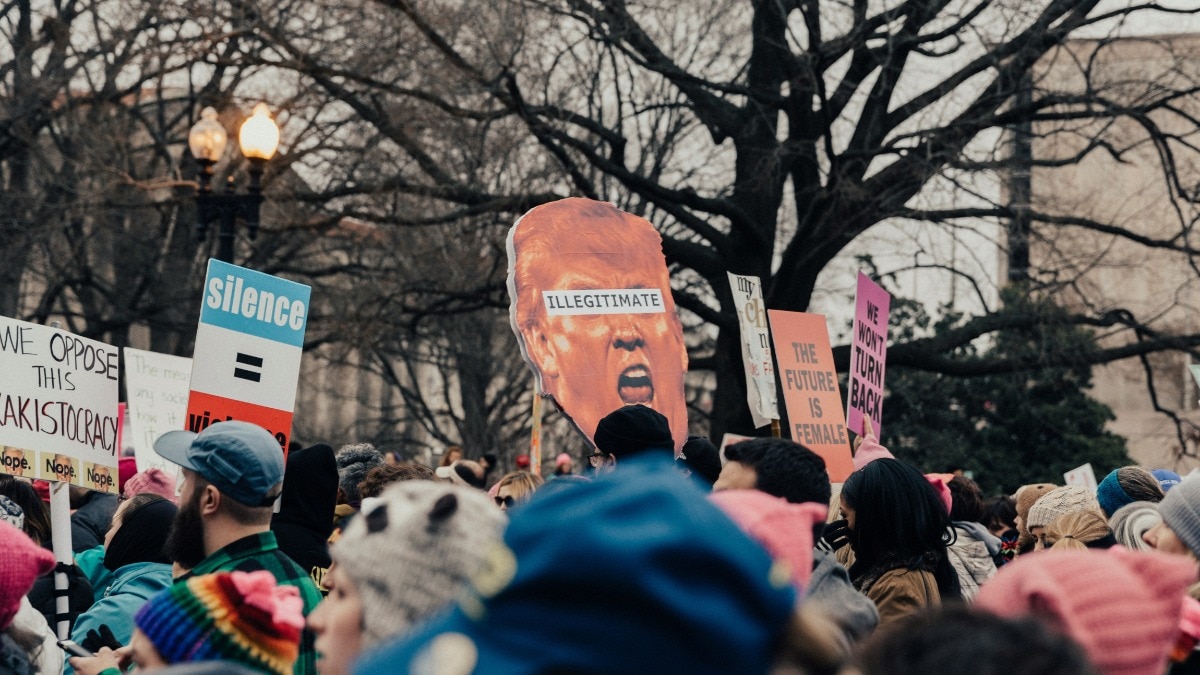
This duo is bridging the gap between New York and India through their olfactory creations
The couple behind D S & Durga speak to Harper's Bazaar about crafting unique fragrance narratives across cultures and continents.


“I imagine the radio sitting in a small, hot shop in Bandra—the Brooklyn of Bombay. The heat deconstructs the oils in the wood. Ragas and Geeta Dutt tunes jangle out of its tiny speaker in the busy city.” This evocative scene isn’t the start of a summer romance but a vivid description of Radio Bombay, one of D S & Durga’s top-selling fragrances. Much like capturing the essence of a bustling day in Mumbai, David and Kavi Moltz, the husband-and-wife duo behind the New York City-based brand, are celebrated in the niche perfume world for going beyond scent memories, crafting entire worlds that transport you to places you’ve never imagined. David Seth, a musician turned self-taught perfumer, crafts all the bespoke fragrances, while Kavi, a trained architect, designs the brand’s minimalist packaging and manages marketing. The brand stands out for its in-house creation and hand-filling of each fragrance, all crafted in New York City.

Harper’s Bazaar India caught up with the duo, who shared their unique approach to storytelling through scent, their earliest scent memories, their favourite Indian ingredients, and more.
HB: How did you come to name the brand Durga, and how did India become a part of its identity?
DS: I went to film school and was really inspired by Satyajit Ray, particularly the character Durga from the Apu Trilogy. When I met Kavi, she reminded me of that character, so I started calling her Durga as a nickname, not just after the goddess but more from the character's name. When we started our brand, we decided to name it “D S & Durga," my initials with Durga. India's influence on the brand is deeply rooted in Kavi’s heritage and my own appreciation for Indian culture. I've followed Paramahansa Yogananda and been a yogi for a long time, so Indian culture is very meaningful to me as well. This deep connection is reflected in some of our scents.
Kavi Moltz: I was born in the States; my parents are from India, and I grew up visiting India every year and have a large extended family there. Though I’ve never lived there full-time, it's such a major part of my life.

HB: What are some of your earliest scent memories that have influenced your signature scents over the years?
DS: Growing up north of Boston, my earliest scent memories are of the ocean and the woods near my parents' house. These New England influences are reflected in many of our fragrances, but it’s really hard to pin us down. I'm just as inspired by the weeds in Bedstuy as I am by the fields of two boroughs in India. We aim to curate unseen beauty and avoid faux aspirational clichés, with each perfume creating its own world, complete with a Spotify playlist; each has images with words that I wrote and sometimes, even a movie, a curated book list, complementary foods, drinks, and music to enhance the experience. We're kind of world builders in that way.
HB: What are some of your favourite Indian ingredients that you have explored in curating scents, and are there any with potential for future exploration?
DS: There are so many. Sandalwood is a key favourite that continues to enchant us and will probably never go away; humanity will always be interested in sandalwood. Due to over-harvesting, we use alternatives from Sri Lanka, Australia, and Indonesia, though the true most beautiful sandalwood as we know is from Mysore. Other favourites include patchouli, vetiver, jasmine, rose, and bergamot. The Indian flower markets offer incredible varieties like mogra and tuberose. For future exploration, Raat ki rani (night-blooming jasmine), even if it doesn't produce oil. Kewra (screw pine) is another intriguing scent that’s distinctly ‘desi,’ specifically the flower, which I recently used in our Lala tequila fragrance. This scent is inspired by a Guadalajara tradition of drinking tequila in the rain. There's an attar from India called mitti attar, which captures the essence of rain-soaked earth. I’ve used it in our fragrance, and it's truly beautiful.
HB: How do you approach storytelling through scent, especially when bridging influences from the West and India?
DS: We don’t intentionally set out to bridge the West and India; instead, we draw inspiration from a wide range of sources. For instance, our scents like Radio Bombay and Holy Ficus reflect a blend of influences. Holy Ficus, inspired by the fig tree where Buddha was enlightened, combines fig with ginger, incense, and cardamom to create a distinctive aroma. Our fragrances naturally incorporate elements from our everyday lives. Indian culture is definitely near and dear to me, and it definitely comes through in some of our scents.

KM: David has been deeply inspired by India even before meeting me, so its essence naturally seeps into our work. But it’s similar to how other influences, like Nordic, Irish, Scottish, or Russian, also shape our storytelling.
DS: In terms of artistic process, I find it easy to transition between different creative disciplines. Creating a fragrance is akin to painting; it’s about blending colours and crafting a sensory experience. For example, with our modern take on a traditional attar, I aimed to capture a classic essence with a contemporary twist. I crafted a lotus accord with jasmine, oud, saffron, and rose, all anchored in Sri Lankan sandalwood. This approach reflects the rich history of attar making, which involves ancient techniques and recipes that predate modern distillation methods.
HB: Are you planning to bring your fragrances to India, and if so, where can people find them?
DS: Yes, we are beginning to establish a presence in India. ‘Scentido’ is one of our key retailers there, though I think niche fragrances in India are still in their infancy right now. We’re excited about the potential and are optimistic about expanding our footprint in India; it’s the next big market in beauty and fashion. While the appreciation for niche perfumes is still growing compared to designer brands, we’ve seen promising signs. We were at a café in Delhi, and someone came up and said, “Oh my God, aren’t you from D S & Durga?” It was amazing to see that people knew us. There’s definitely an underground community in the know there, and that’s exactly our target customer. It’s great to connect with them and continue making things that genuinely interest this audience while doing it the right way amidst a lot of other options out there.
All images: The Brand
Also read: How South Asian beauty rituals changed your routine
Also read: Why French girl beauty is on all our minds










